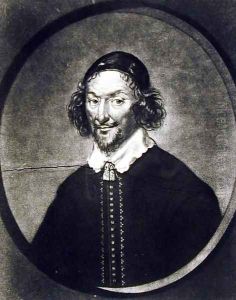Woodforde, Samuel Paintings
Samuel Woodforde was an English painter born in Castle Cary, Somerset, England, in 1763. He was known for his work as a history and portrait painter. Woodforde was the son of a clergyman and was related to the diarist James Woodforde. He showed an early interest in art and was encouraged to pursue his talents.
Woodforde began his formal training at the Royal Academy Schools in London in 1782, where he studied under the tutelage of renowned artists of the time. During his time at the Academy, he won several awards for his work, indicating his potential as an artist. Woodforde’s early works included historical subjects, a popular genre of the time, which allowed him to exhibit at the Royal Academy.
In 1790, Woodforde traveled to Italy, which was a common practice for artists of his day, to study the works of the great Italian Masters. He spent a significant amount of time in Rome, where he was influenced by the grandeur of classical art and the works of Renaissance painters. This experience greatly influenced his style and the subjects of his paintings.
Upon his return to England in 1793, Woodforde continued to paint historical scenes but also began to focus more on portraiture. He established himself as a portraitist in London and later in Oxford, where he received numerous commissions from the university and its members. His portraits are characterized by their fine detail and the use of light to create depth and character in his subjects.
Woodforde's health began to decline in the early 1800s, and he died in 1817. Although he never reached the same level of fame as some of his contemporaries, his work was respected and admired by those who commissioned it and by art historians who later studied the period. Woodforde's contributions to English art, particularly his historical and portrait works, provide insight into the style and cultural priorities of the late 18th and early 19th centuries.
